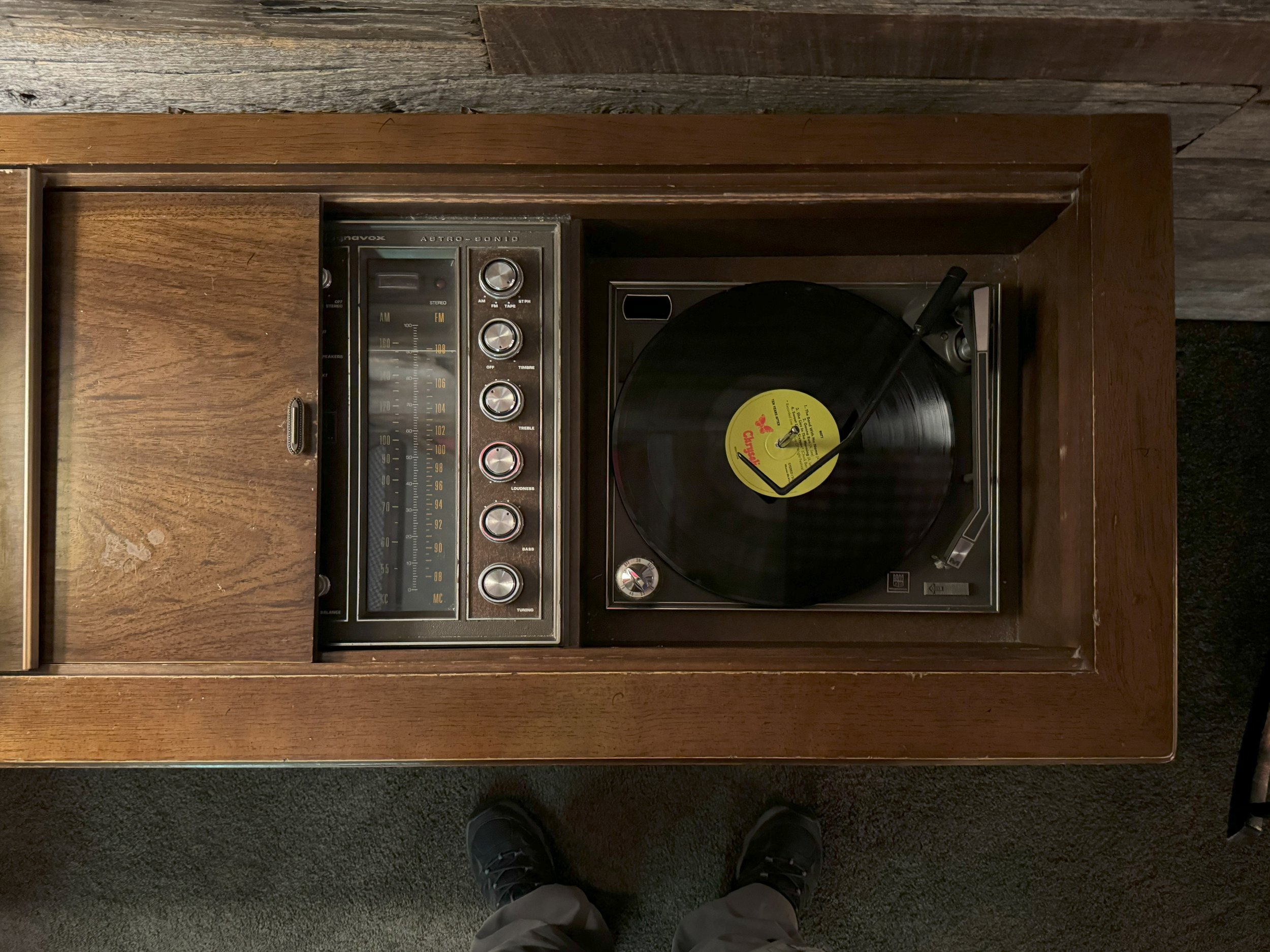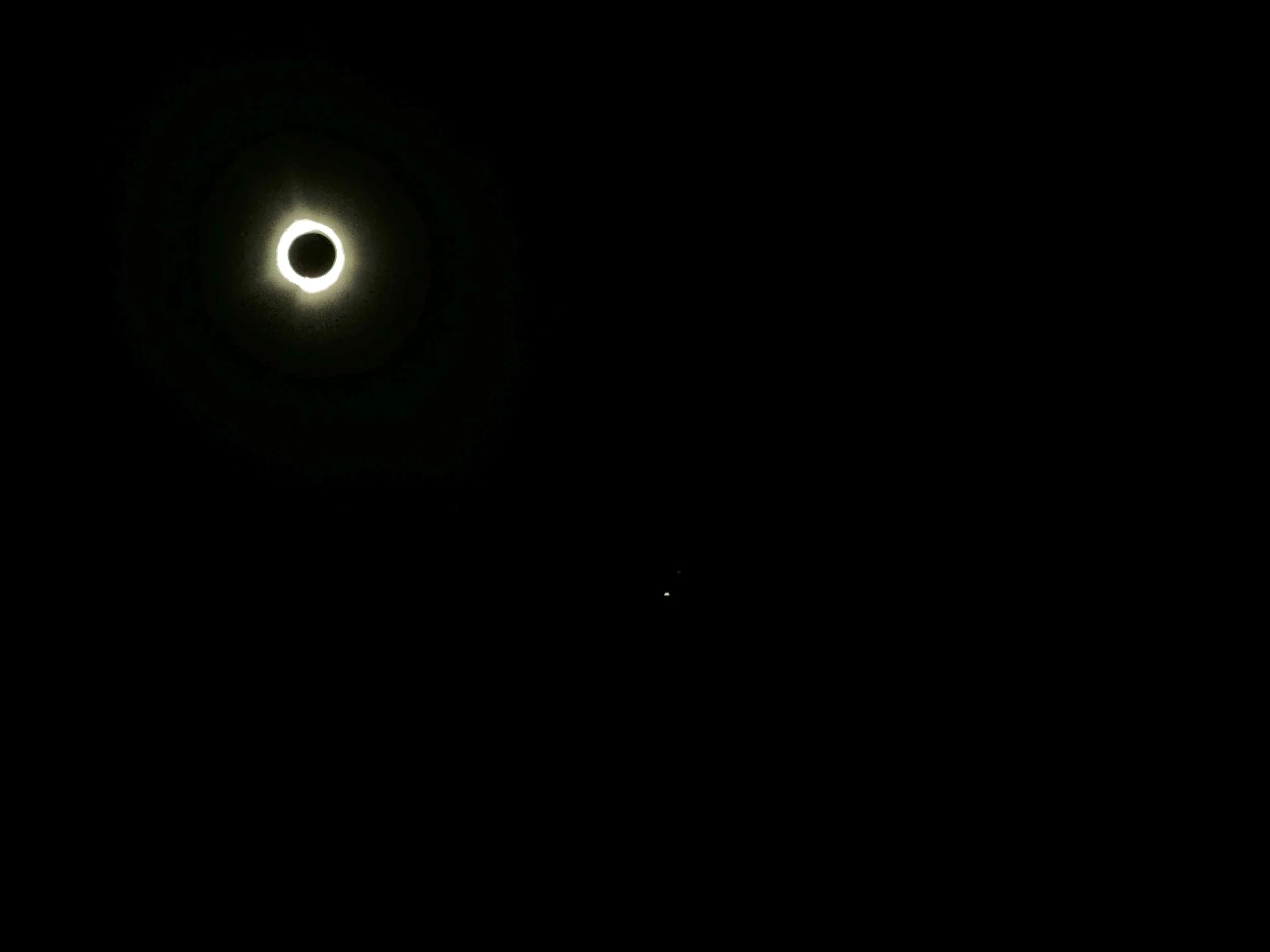
Page 3 of 4
Louisville, Kentucky
Light, dark, light again
After two days (and two slideshow pages) in Cincinnati, we’re headed southwest an hour and a half (or so) to Louisville, Kentucky. There are some similarities between Cincinnati and Louisville- both are located on the Ohio River (which was at or approaching flood stage), both sit across from a state they somewhat look down upon, and, for purposes of this trip, both sat just south of the the approaching eclipse’s path of totality. More about that later.
We’re making our first stop in Louisville at the Big Four, which is not some type of really, really small college sports conference but instead a former railroad bridge converted to a walking path that goes all the way to Indiana or, better yet, right back to Louisville.
I have family in Louisville so I was able to get a tour all over the city, seeing neighborhoods I know I would have otherwise missed and going to good local restaurants that I know I would have otherwise passed by. As described to me, if Cincinnati is the most southern northern city, then Louisville is the most northern southern city. Once you start thinking about it, this makes a lot of sense, and the urbanism and scale of both cities really reflect that.
Downtown Louisville’s most architecturally significant building is Michael Graves’ Humana Building, although its future is currently in flux. Humana moved out of the tower and now no one is really sure what you do next with the building, especially in a city where no one is really looking for a lot of downtown commercial office space. I’m not sure if the building can be adapted to residential or a hotel, and even if it could be, all those little square windows that look good on the outside might not work all that great from the inside.
The Humana Building may be the downtown’s most architecturally significant building, but far and away, the most popular one is really just a great big giant baseball bat (sorry, Humana Building). That great big giant baseball bat bat (or, more accurately, a great big giant Louisville Slugger) stands in front of the Louisville Slugger Museum and Factory Tour, downtown’s top attraction.
Inside the Louisville Slugger Museum and Factory Tour, you are afforded the opportunity to learn exactly how a tree in Pennsylvania becomes a bat destined for the major leagues (spoiler: it takes about 45 seconds in a machine to turn it into a bat).
Even though that big giant bat a block away is probably more popular, there’s also a big, giant naked gold guy only a block away. The sculpture, David (inspired by Michelangelo) has a fairly interesting history. It was first built in 2005 by conceptual artist Serkan Ozkaya for the Istanbul Biennial, and famously it collapsed during its installation. Undiscouraged, the artist made two more, one is in Turkey and the other one is right here.
Careful students of art, history and art history may notice two significant differences between David (inspired by Michelangelo) and David (actually by Michelangelo). The first is pretty obvious and that’s the material. In Florence, David is made of marble and not finished in gold. The second is also pretty obvious, but only if you were able to see them side by side. While David in Florence is pretty big, he’s only half the size of his golden doppelganger here in Kentucky. Maybe that’s the reason the first one collapsed.
David (inspired by Michelangelo) stands outside the most interesting hotel in Louisville, where, thankfully, I was lucky enough to stay.
The 21C Museum Hotel is more than a hotel, it is an actual museum as well. In addition to the big giant naked gold guy out front, there are free galleries open 24 hours a day. The art was pretty strong throughout, although my favorite exhibit there was not in one of the galleries but instead was inside my hotel room.
Before I arrived in Louisville, the 21C Museum Hotel sent me an email asking me if I wanted to consider an upgrade. There were rooms that were slightly bigger (I had no need for that) but also on the list was a chance to upgrade to Asleep in the Cyclone, an art installation by by Jonah Freeman and Justin Lowe. For only $60 extra, this upgrade seemed like a no brainer, and right up until check in, I was hopeful the upgrade would be available but doubtful it really would be, I mean what kind of person would decide to stay at the 21C Museum Hotel and not want to upgrade to the only room that’s also an art exhibit. Apparently it turns out that I am the only one of that kind of person- the upgrade was available and before you knew it, I was in the cyclone and it was time to sleep.
The room is in the basement adjacent to the exhibition galleries and, once inside, you knew you were somewhere special. Asleep in the Cyclone was fun throughout and had two really distinctive features. The first was a multicolored ceiling and wall installation that was especially fun when viewed lying in the bed, and the second one was a series of platforms that led up to the sunken bed, which were fun to sit or climb on, even though it wasn’t especially easy to get out of that sunken bed and stumble your way to the bathroom in the middle of the night. There was more to the room- including that hard to miss brightly lit display cabinet that I couldn’t figure out how to turn off or down at night- as well as one other truly special thing that soon became my favorite.
Up against the wall was a giant, vintage record player console with a selection of records curated by the artists, as well as careful instructions on how to actually play a record. It has been years since I had a record or intentionally listened to one, and while I technically still have a record player I haven’t thrown out, I haven’t listened to it since I was in high school. All that time makes you forget about how nice it is to listen to one side of an album uninterrupted, especially with the sound quality of that almost historic stereo console. I stayed in the room as long as I possibly could listening to records, ending up with the A side of Deja Vu by Crosby Stills Nash & Young, a side which ends with Woodstock and the lyrics: we are stardust, we are golden, we are billion year old carbon, and we’ve got to get ourselves back to the garden. Which seemed almost prophetic for my imminent trip to Indiana to see a total eclipse of the sun.
Going into the eclipse, I had a plan that (despite better offers) I held to. I would obsessively check the weather forecast and cloud cover, then drive as far as needed to the area with the best conditions. I started by heading north to Scottsboro, Indiana where my hotel would be that night. My hotel (I really mean to say my motel) was in Scottsboro since hotels closer to the center of totality were outrageously priced. On principle alone, I’d rather sleep in my rental car than spend over $700 a night to sleep in a Super 8.
Scottsboro would have worked fine, but instead I headed north to the next town of Seymour, Indiana where, if the lyrics of Small Town are to be believed, one day Johnny Cougar Mellencamp will be buried (he’s from Seymour). I ended up at a Home Depot parking lot, which was far less busy than the Walmart just across the street. Under clear skies, I thoroughly enjoyed the most spectacular (non-destructive category) celestial event imaginable. At the moment of totality, there were gasps and applause, and during totality some of the people in the Walmart parking lot even shot off midday fireworks. What more could anyone ask for.
For weeks before the eclipse, I struggled with the thought of bringing a real camera instead of just my iPhone 15 Pro. I also looked at all matter of phone attached lenses and tripods to get the perfect picture, but decided that it wasn’t worth all of the hassle during those short three minutes (or so) of totality to spend all my time setting up a camera and tripod and (as unbelievable as this may sound), I really just wanted to enjoy the moment without taking pictures.
All that explains this picture, which was taken using an app I already had on my phone called CameraPro. If you stand back a few feet and squint your eyes, it’ almost looks like a good eclipse photo and for me, at least in this very specific case, almost is more than good enough.


